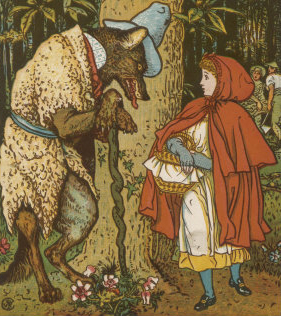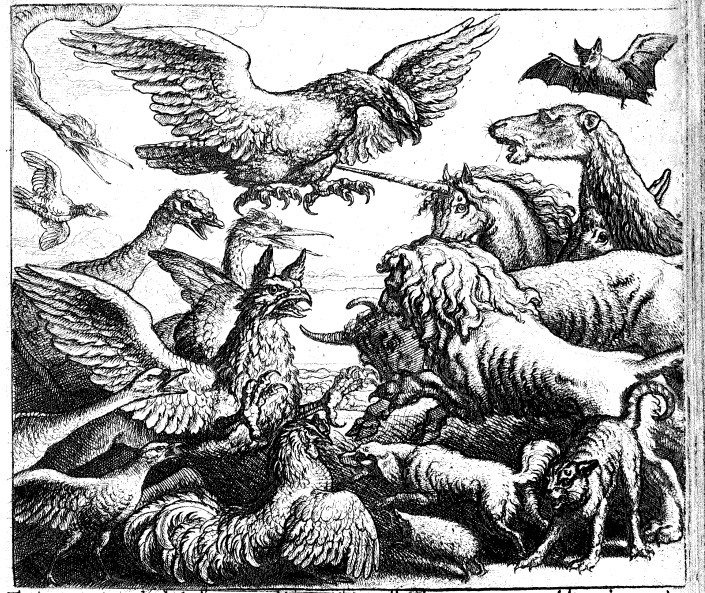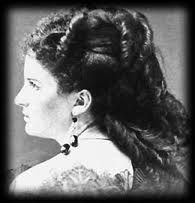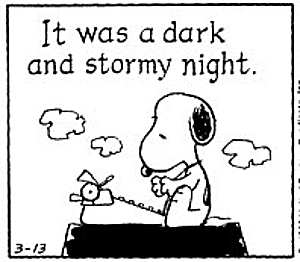Fiction Has A Long History...
Parable: The Prodigal Son Myth: Durga slays the buffalo demon Fairy Tale: Little Red Riding Hood Fable: The BatSyllabus Current Week Presentation Schedule Make-up List
Updated 9-10-17
This site is under construction.
Things to Read for the first session:
Here are some short pieces to read before class starts. First, three excellent short stories by the late great Grace Paley: "Wants", "Goodbye and Good Luck," and Mother.
Also read this nonfiction piece from The New York Times' "Modern Love" series that uses fictional techniques, and a short story by the excellent science fiction writer N.K. Jemison that plays nicely with time by dividing into out-of-order "chapters," and gives the old style satisfaction of a surprise ending: "Henosis."
Optional:
A Quick guide to getting started with fiction/short story writing. MSW doesn't necessarily agree that this is the best approach to writing. In fact, she thinks it probably isn't. BUT it covers a lot of material fast and mentions a lot of the issues fiction writers deal with.
Current Class--Updates here
Presentation list
Fundamentals of Fiction
(Fiction Writing I)
WRIT1-CE9320 Fall 2016New York University, School of Professional Studies,
Center for Applied Liberal Arts
Class Location: Manhattan Village Academy, Room: 230
Instructor: Meredith Sue Willis MeredithSueWillis@gmail.com
Day and time: Wednesdays 6:30 PM - 8:50 PM
October 5, 2016 - December 21, 2016This site will be updated reguarly during the semester. Please check it a few days before class for any changes. For information about MSW's fiction, go to commentary, or read some of her short fiction online: "Rescue" or "Tara White." For more of her writing available online, click here .
MSW Home Official NYU policies and syllabus
To Read & Watch:
A discussion about saving drafts in A Journal of Practical Writing.
20 apps (most free) to help your writing
List of things to read suggested by this class
Coincidence in fiction
Kurt Vonnegut explains Plot.
Amusing piece from Buzz Feed in which some guy in a writing workshop critiques Jane Austen.
John Berryman's advice to W.S. Merwin at the end of a Merwin poem called "Berryman"
I asked how can you ever be sure
that what you write is really
any good at all and he said you can't
you can't you can never be sure
you die without knowing
whether anything you wrote was any good
if you have to be sure don't write
Common errors made by fiction writers . Do you agree?
Recent article on the importance of precise prose by MSW.
Bibliography of Books about Writing
Quotations about writing
Proofeader's Marks
Formatting Fiction
Literature to Read and Study
A checklist for critiquing fiction
Grammar Questions Answered: The Grammarist; Grammar Girl; The Center for Writing Studies
Schedule of Topics and Assignments
Please check this web page at least once a week for changes and for links to readings. Fundamentals of fiction writing to be addressed in this class include: story, setting, point-of-view, genre, dialogue, and character. Required work includes short writing assignments in and out of class, readings (mostly online), responses to one another's writing (each participant is expected to support the efforts of all the class members with responses and critiques), and presentation of writing to the class.
Assignments must be turned in as hard copy (not e-mail attachments). They should be typed double-spaced with at least 1 inch margins on all sides using a font comparable to Times New Roman 12 point. Homework assignments should be no more than 2 pages long. Pieces presented to the class for critique during the second half of the course should be @ 5 pages long with copies handed out to the whole class a week before the presentation. The text for this course is the work of the other students plus the occasional readings.
You are expected to attend all classes, as the course is planned around class discussion.
Most sessions will include in-class writing.
It should be noted that all NYU policies on academic integrity (i.e., plagiarism), are fully in effect in this course. For complete details on NYU policies, click here.
Please consider all assignments, in class and out, as possible beginnings for stories or other works of fiction.
1.10-4-17 Introduction--The Power of Story.
Why fiction? Where do our ideas come from? Fiction is something made; the roots are in story-telling. Genres of fiction (flash fiction, parable, short story, autobiographical fiction, long story, novella, novel); special issues in fiction (voice, tense, point of view); common terms for fiction writers (process and product; "show & tell;" structure, story, and plot; point of view; scene and summary ). When is it fiction and when is it memoir? What else might it be?
In class, parables, fables, and "A Man Told Me The Story of His Life," a short short by Grace Paley (photo left). Also, take a look at this online short-short by MSW: "Rescue."
2 . 10-11 Real Life and Fiction.
Reading Assignments due: "Car Crash While Hitchhiking" by Denis Johnson and John Cheever's twentieth
century short story "Reunion" (Image of John Cheever right.) (In order to read some of these selections, you need Adobe reader. If you don't have it, download it for free.)
Also read hand-out story "Topics in Advanced Rocketry."
Writing assignment due: Write a piece that starts with something autobiographical that you turn into fiction. This does not have to be complete. One of the things the assignments are meant to do is give you a number of starts that might turn into something longer (a short story, a novella, a novel).
In-class Discussion: What do we need to make our work better? Time to do it? Critiques? More reading for models?
Images above: Denis Johnson left, John Cheever right.
3.10-18 The Heart of Story is Conflict.
For 10-26-16
Please bring in a story, chapter, or even a few paragraphs of fiction to share with the class--hard copy or link.
Reading Assignments due:
1. A brief scene from a novel, Because It is Bitter.
2. A 19th century story: "Desiree's Baby" by Kate Chopin.
3. A brand new story by Andria Nacina Cole called "On the Blood."
Optional: Writing the Action Scene.
Optional: "The Use of Force" by poet William Carlos Williams.Writing assignment due: A scene or short short or fragment about a relationship in conflict.
In-class: The shape of stories (conflict & climax); the essential importance of the concrete in fiction.
(Imagse of Andria Nacina Cole and Kate Chopin)
4 11-25. Creating Character Concretely.
Reading Assignment due: Read short descriptions of Caesar Flickerman, Alice, Mr. Slope , Burdovsky, and Dave Rivers. Watch for physical action as well.
Writing assignment due: Begin a piece with a description of a character in which you use sense words that include sound, smell and touch (perhaps the texture of hair?). Also try to include some characteristic physical action for the person. If this leads you into a story or dialogue, that's fine. The description is meant to get you started.
In-class discussion: Character Out and In.
5. 11-1 Place as Character.
Reading Assignment due: "The Old Demon" by Pearl S. Buck and this sample from a Donna Leon mystery novel: the online samples of place description here. Especially compare the mystery novel opening (very practical) to the Cormac McCarthy fragment (poetic!).
Writing Assignment Due: Begin a piece of fiction by describing a place, pleasant or unpleasant, using as many senses as possible. Obviously this could be a setting for a story, but consider having it be not just background, but a participant in the story. As you describe, think about what might happen in this place, what influence it has on the people in it. Use it as an opening--the setting-- for a story or a scene in a longer project, or add it to something you've already begun writing.
In-class discussion: Begin discussion of Point-of-View. See Point of View chart.
Student Presentations Begin. (See below for dates)
6.11-8 Dialogue: The Spine of Fiction
Reading Assignments due: "The Pura Principle" by Junot Diaz; "Dialogue: the Spine of Fiction" ; and “Too Many Tags.”Writing Assignment Due: Write a scene or short short story that begins with a passage of dialogue.
In-class: Discussion on Making a Place for Writing in Your Life
Student Presentations. (See below for dates)
(image above right is Junot Diaz)
7. 11-15 . Voice: The Teller of the Story
Reading Assignments Due: "Sisters of Mercy" by Joan Leegant and "Girl" by Jamaica Kincaid.
In Class Discussion: Be prepared to talk as well about the the stories the class brought in, with links here. What are your thoughts on cultural appropriation?
Writing assignment due: Choice: bring part of a draft of one of your stories expanded or, if you are still looking for something new, write a piece that is told by a character unlike you in age, religion, ethnic group-- whatever. If you find this hard, write some of the "Characteristics" for this person.
Student Presentations. (See below for dates)
(Photo of Jamaica Kincaid)
No Class November 22, 2017
8. 11-29 Plot and Plot-Driven Fiction
Reading Assignment Due: The Raymond Carver short-short online called "Little Things" or "Popluar Mechanics;" Compare the Carver story to Solomon and the two harlots in the Bible; "The Necklace," an old-fashioned plotted story by Guy de Maupassant.
Optional: Plot notes
Writing assignment due: Choice: bring part of a draft of one of your stories expanded or, if you are still looking for something new, write a contemporary short short that uses the plot from mythology, fairy tales, or legend (as Carver used the plot from the story of King Solomon).
In Class Discussion: A few thoughts on publishing your work
Some places to start your research on where to submit and publish:
Student Presentations. (See below for dates)
(photo above right is Raymond Carver)
Session 9 12-6 Character Driven Fiction
Reading Assignment due-- Character Driven Fiction. Read an MSW story "Tara White".
Take a look at how some writers begin their works.
Writing assignment due: A draft or at least half of a complete piece of fiction.
Student Presentations. (See below for dates)
No homework accepted after this date.
Session 10 12-13 Revision: Torture or Delight?
Bring 9 copies of ONE paragraph of your work for close editing by te group.In Class Discussion: Revising Prose narrative
Student Presentations. (See below for dates)
Fall 2017 Fundamentals of Fiction Class suggestions for good fiction reading:
"Where the Door is Always Open and the Welcome Mat is Out" by Patricia Highsmith.
"The Jewbird" by Bernard Malamud
"What Time Is It Now, Where You Are?" by Colum McCann (this is a version published in The Washington Post)
"What Time Is It Now, Where You Are by Colum McCann" (version from McCann's collection Thirteen Ways of Looking).
Opening of novel Rule of the Bone by Russell Banks
Some fiction works and authors suggested by the class:
Harry Potter series
The Last Girlfriend on Earth: And Other Love Stories by Simon Rich
Collected Stories by Ivan Bunin (1st Russian Nobel Prize for literature)
Jane Austen
P.G. Wodehouse
This is How You Lose Her by Junot Diaz
The Discreet Hero by Mario Vargas Llosa
Let the Great World Spin by Colum McCann
Scaramouche by Rafael Sabatini
Rule of the Bone by Russell Banks
Hag-Seed by Margaret Atwood
Brideshead Revisited by Evelyn Waugh
Some places to get ideas for submitting your work:
http://www.writehabit.org/journals.html
http://www.newpages.com/magazines/literary-magazines
http://www.everywritersresource.com/bestonlineliterarymagazines.html
http://www.nypl.org/weblinks/1249
Things to Read and Resources:
A study published in SCIENCE magazine about how literary fiction is good for you! http://well.blogs.nytimes.com/2013/10/03/i-know-how-youre-feeling-i-read-chekhov/?_r=0
A Few Places that publish short fiction-- online and hard copy
One view of writing: Charles Bukowski's poem "So You Want to Be a Writer"
A funny poem by Billy Collins about workshopping poetry.
Walter Mosley on fiction writing.
Blog entry by Tayari Jones on the importance of names.
Resources for writers: Resources.
Notes on Point of View
"The Business of Books, by André Schiffrin" (review by Meredith Sue Willis of a book on the status of publishing)
Online fiction by Meredith Sue Willis: Feral Grandmothers: Little Red's at Persimmon Tree; "The Two Lindas; ""How She Chose the Day,"
Click here for more MSW online fiction and here for MSW's books.
Presentation List For Critique by the Class
Bring copies for everyone the WEEK BEFORE
Subscribe to Meredith Sue Willis's Free Newsletter
for Readers and Writers:
Send mail
NYU policies and required information:
Fundamentals of Fiction
General Course Information:
Fiction Writing I WRIT1-CE9320 Fall 2017
New York University, School of Professional Studies,
Center for Applied Liberal Arts 838 Broadway, 6th floor New York, NY 10003
Class Location: Manhattan Village Academy, Room: 221A
Instructor: Meredith Sue Willis MeredithSueWillis@gmail.com
Day and time: Wednesdays 6:30 PM - 8:50 PM October 4, 2017 - December 13, 2017
Meredith Sue Willis home page is http://www.meredithsuewillis.com
Class webpage is http://meredithsuewillis.com/nyufictionone.html
Course Description: If you want to write fiction but need to develop basic skills, then examine the fundamentals of fiction, including story structure, character, plot, dialogue, description, point of view, style, and voice in this course. Writing assignments help you to mine your life experiences for fiction pieces. Your work and the publications of established authors are read and analyzed in class. In addition, you are encouraged to develop your powers of observation and to hone your fiction-writing skills by writing sketches and viewing the process as a daily activity. Fundamentals of fiction writing to be addressed in this class include: story, setting, viewpoint, genre, dialogue, and character.
Course Prerequisites: Command of written English and a desire to write fiction.
Course Structure/Method:
This course is in person and meets weekly. Attendance is expected, as students support and critique one another's work. There will be weekly assignments and occasional presentations to the class.
Course Learning Outcomes: By the end of this workshop course, students will, if they do all assignments in class and out, have several starts to short stories or chapters or a draft of a full story or chapter. Students will also have improved their ability to critique their own work and the work of others.
Communication Policy: Communication is by email, and the professor will attempt to answer email inquiries within forty eight hours.
Course Expectations: Students are expected to look at the class webpage at least weekly for changes, updates, and links to readings. These will be found at http://meredithsuewillis.com/nyufictionone.html. Homework assignments should be in hard copy, double-spaced with one inch margins on all sides and a font similar to Times New Roman 12 point, @ 2 pages long (up to 600 words). The homework assignments are for the professor only. She will respond holistically. You will also be expected to present your work to the whole class at least one. You are expected to attend all classes, as the course is planned around class discussion. Most sessions will include in-class writing.
Required and Recommended Material: The text for this course is the work of the other students plus occasional readings that usually appear as links on the web page or as hard copy handouts.
Assessment Strategy: This is a non graded class. Assessment is by the teacher's holistic responses to student work as well as by class response to work presented for critique to the class.
"NYUSPS policies regarding the Family Educational Rights and Privacy Act (FERPA), Academic Integrity and Plagiarism, Students with Disabilities Statement, and Standards of Classroom Behavior among others can be found on the NYU Classes Academic Policies tab for all course sites as well as on the University and NYUSPS websites. Every student is responsible for reading, understanding, and complying with all of these policies."
The full list of policies can be found at the web links below: · University: http://www.nyu.edu/about/policies-guidelines- compliance.html · compliance.html · NYUSPS: http://sps.nyu.edu/academics/academic-policies-and- procedures.html
School Grading Policies:
NYUSPS Career Advancement (non-degree) http://sps.nyu.edu/content/scps/academics/noncredit-offerings/academic-noncredit- policies-and-procedures.html
NYUSPS Diploma (non-degree) http://sps.nyu.edu/academics/academic-policies-and-procedures/diploma-academic- policies-and-procedures.html#Good_Academic_Standing
Course Outline:
Session 1.10-4-17 Introduction. Why fiction? Where do our ideas come from? Genres of fiction (flash fiction, parable, short story, autobiographical fiction, long story, novella, novel); special issues in fiction (voice, tense, point of view); the writer's life; and common terms for fiction writers (process and product; "show & tell;" structure, story, and plot; point of view; scene and summary ). When is it fiction and when is it memoir? What else might it be? In class, some parables and fables and "A Man Told Me The Story of His Life," a short short by Grace Paley (photo left).
Session 2 . 10-11 Real Life and Fiction. Reading Assignments due: "Car Crash While Hitchhiking" by Denis Johnson and John Cheever's twentieth century short story "Reunion" (Image of John Cheever right.) (In order to read some of these selections, you need Adobe reader. If you don't have it, download it for free.) Writing assignment due: Write a piece that starts with something autobiographical that you turn into fiction. This does not have to be complete. One of the things the assignments are meant to do is give you a number of starts that might turn into something longer (a short story, a novella, a novel). In-class Discussion: What kinds of critiquing are most helpful? Or, what do we need to make our work better? Simply time to do it?
Session 3.10-18 Conflict as the Heart of Fiction. Reading Assignments due: 1. "The Use of Force" by poet William Carlos Williams. This is a brief story, probably autobiographical, with a very open conflict and some good description of action. 2. A brief scene from a novel, Because It is Bitter. 3. "Desiree's Baby" by Kate Chopin. Writing assignment due: A relationship with a conflict and perhaps a secret. Again, this does not have to be complete. In-class: The shape of stories (conflict & climax); the essential importance of the concrete in fiction.
Session 4 10-29. Creating Character Concretely. Reading Assignment due: Read short descriptions of Caesar Flickerman, Alice, Mr. Slope , Burdovsky, and Dave Rivers. Watch for physical action as well. Writing assignment due: Begin a piece with a description of a character in which you use sense words that include sound, smell and touch (perhaps the texture of hair?). Also try to include some characteristic physical action for the person. If this leads you into a story or dialogue, that's fine. The description is meant to get you started. In-class discussion: Character Out and In.
Session 5. 11-1 Place as Character. Reading Assignment due: "The Old Demon" by Pearl S. Buck and this sample from a Donna Leon mystery novel: the online samples of place description here. Especially compare the mystery novel opening (very practical) to the Cormac McCarthy fragment (poetic!). Writing Assignment Due: Begin a piece of fiction by describing a place, pleasant or unpleasant, using as many senses as possible. Obviously this could be a setting for a story, but consider having it be not just background, but a participant in the story. As you describe, think about what might happen in this place, what influence it has on the people in it. Use it as an opening--the setting-- for a story or a scene in a longer project, or add it to something you've already begun writing. In-class discussion: Begin discussion of Point-of-View. See Point of View chart.
Session 6.11-8 The Spine of Fiction: Dialogue. Reading Assignments due (links online): "The Pura Principle" by Junot Diaz; "Dialogue: the Spine of Fiction" ; and "Too Many Tags." Writing Assignment Due: Write a scene or short short story that begins with a passage of dialogue. In-class: Discussion on Making a Place for Writing in Your Life Student Presentations Begin. (See webpage for dates)
Session 7. 11-15 . Voice: How We Tell the Story. Reading Assignments Due: "Sisters of Mercy" by Joan Leegant and "Girl" by Jamaica Kincaid. Optional: Writing the Action Scene. Writing assignment due: A piece that is told by a character unlike you in age, religion, ethnic group-- whatever. If you find this hard, write some of the "Characteristics" for this person. In Class Discussion: Revising Prose narrative Student Presentations.
NO CLASS 11-22-17
Session 8. 11-29 Plots Reading Assignments Due:
1. The Raymond Carver short-short online called "Little Things" or "Popluar Mechanics." 2. Compare the Carver story to Solomon and the two harlots in the Bible. (links online) 3. Plot notes Writing assignment due: Write a contemporary short short that uses the plot from mythology, fairy tales, or legend (as Carver used the plot from the story of King Solomon). Student Presentations,
Session 9 12-6 Plot-Driven Fiction Reading assignment due--Plot driven fiction:"The Necklace," an old-fashioned plotted story by Guy de Maupassant. (photo of Guy de Maupassant) Writing assignment due: A draft or at least half or a complete piece of fiction. Optional: Take a look at how some writers begin their works. Student Presentations.
Session 10 12-13 Character Driven Fiction Reading Assignment due-- Character Driven Fiction. Read an MSW story "Tara White".










